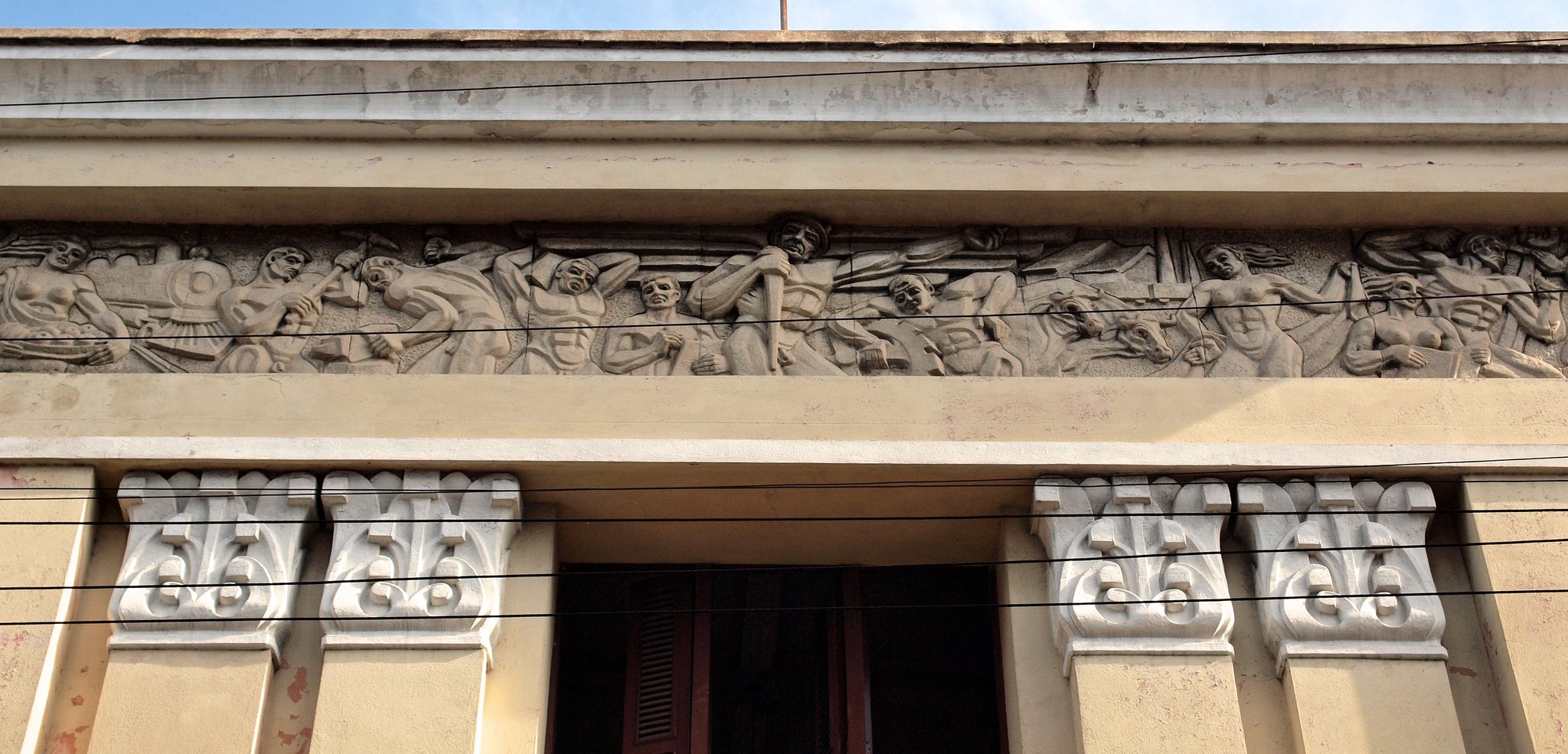#1132. Soviet Neoclassical Facade with Monumental Frieze and Decorative Capitals
The image captures an expressive frieze located on the facade of a building in classical or neoclassical style. The frieze is a longitudinal sculptural composition with relief figures, depicting what appears to be motifs of labor, industry, or possibly historical content. The relief is executed in a manner characteristic of Soviet monumental art, suggesting it was created during the period of the 1930s-50s.
The architectural composition of the facade is strictly symmetrical. Below the frieze is an opening (presumably a door or window) framed by decorative capitals with volutes. These elements are executed in a stylized Corinthian order, giving the building a classical monumentality. The capitals serve not only a decorative function but also visually support the upper part of the facade.
The color scheme of the facade is maintained in beige and sand tones, which is characteristic of many administrative buildings of the Soviet era. The facade material is likely plaster or artificial stone. The overall composition combines elements of classical architecture with Soviet monumentalism, creating a characteristic example of Socialist Realism architecture.
